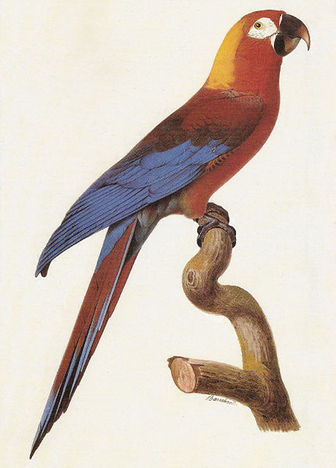Hispaniolan Macaw
A pair was kept in the royal menagerie at Schönbrunn Palace, Vienna, Austria from 1760.

The Hispaniolan Macaw is classified as Extinct (EX), there is no reasonable doubt that the last individual has died.
Hispaniolan Macaw, is not included here as it is considered to now be extinct. More
As many other macaws, the Hispaniolan Macaw was favoured as a cage bird, though local people also hunted it for its meat. The combination of factors led to its extinction. The bird occurred in Cuba and Hispaniola, and some believe that it also inhabited Jamaica. This assumption is based on a red macaw which was shot in 1765. Unfortunately, this skin was lost so it is impossible to determine whether it was indeed identical to the birds from Cuba and Hispaniola. More
The last record of the Hispaniolan Macaw was of a specimen shot on Cuba in 1864 at La Vega, in the neighbourhood of Zapata Swamp. The species may have survived for another 20 years or so. Museum specimens Only 19 specimens of the Hispaniolan Macaw remain. They are in museums in New York, Washington, Havana, Tring, Paris and Vienna. The provenance of the Leiden specimen is unknown. It is simply labelled 'Cuba'. http://ip30.eti.uva. More
writing in 1836, was the last to record Hispaniolan macaws, in 1820 (Wetherbee 1985). (BirdLife International 2004) An Jamaican skin of a red macaw from the work of Gosse in 1847, shot about 1765 by Mr Odell, was stuffed and described in detail by a Dr. Robinson, but can no longer be traced. In 1905, Rothschild gave it the name Ara gossei, because he believed this was evidence enough of a species endemic to Jamaica (Fuller 2000). More

Family : Psittacidae
Genus : Ara
Species : tricolor
Authority : Bechstein, 1811

